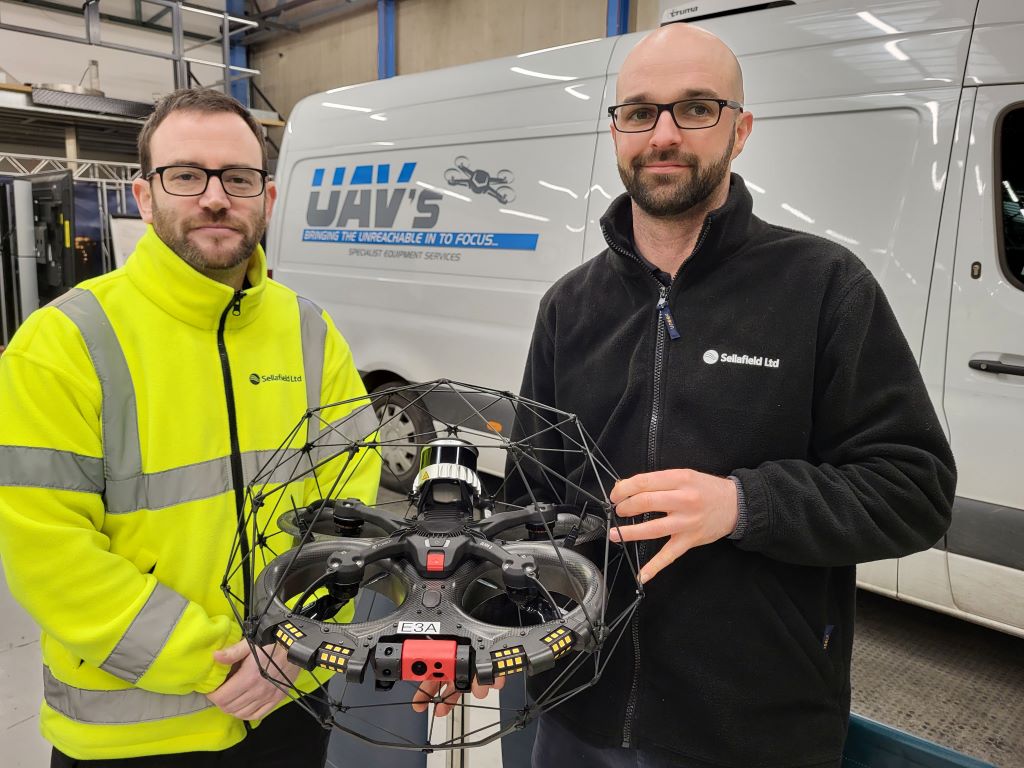In a groundbreaking development at the Sellafield nuclear site in Cumbria, unmanned aerial vehicles (UAVs), also known as drones, are being used to ensure the safety of employees during the decommissioning process of the nuclear plant.

These state-of-the-art drones are equipped with advanced technology, including Lidar sensors and Radiation Assessment Detector (RAD) dosimeters, and play a crucial part in mapping potential radiation hotspots within the nuclear site.
The operation begins with the deployment of the Elios 3 drone which are equipped with Lidar sensors. These sensors allow the UAV team, who are located at a safe distance, to gather detailed data about the site's layout and structures. Additionally, the drone is equipped with a RAD dosimeter which enables them to detect and measure radiation levels in various areas of the facility.
The operation begins with the deployment of the Elios 3 drone which are equipped with Lidar sensors. These sensors allow the UAV team, who are located at a safe distance, to gather detailed data about the site's layout and structures. Additionally, the drone is equipped with a RAD dosimeter which enables them to detect and measure radiation levels in various areas of the facility.
One of the primary objectives of these radiation monitoring flights is to create accurate 3D models of the facility. The Lidar data collected by the drones is processed in a computer-aided design (CAD) system, generating comprehensive 3D models. These models serve as valuable tools for engineers, aiding them in making informed decisions regarding the decommissioning process.
"Sending a drone into this tight and unused space rather than an employee in the first instance reduces risk, and also saves time and money."
Amanda Smith, the UAV equipment program lead at Sellafield Ltd's Engineering Centre of Excellence,
Amanda also highlighted the challenges faced by drone pilots during these missions, such as navigating through tight confined spaces and adapting quickly to changing circumstances. Additionally, Sam Jay, UAV equipment engineer and chief pilot, underlined the significance of safety precautions in these intense flights. The drones are equipped with sensors that help prevent damage in case they come into contact with obstacles, such as pipework, within the facility.
Additionally, the radiation monitoring aspect of these flights is crucial in the identification of potential radiation hotspots in areas with unknown exposure levels. Tom Calverley, a radiometric physicist involved in the project, explained that “the drones aim to pinpoint changes in dose readings within specific areas. If significant changes are detected, further investigations can be carried out to understand the reasons behind them.”
The deployment of drones at the Sellafield nuclear site represents a pioneering approach to enhancing safety and efficiency during the decommissioning process. These UAVs not only reduce the risk to human workers but also provide invaluable data and 3D models that aid engineers in making informed decisions. This innovative use of technology is not only transforming the way decommissioning is conducted but also ensuring that radiation exposure remains within safe limits.
For more exciting updates like this from the world of engineering, sign up to receive our journals
Publications

